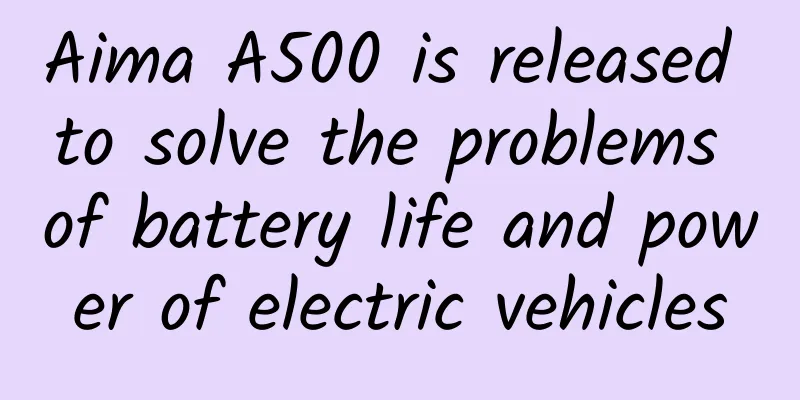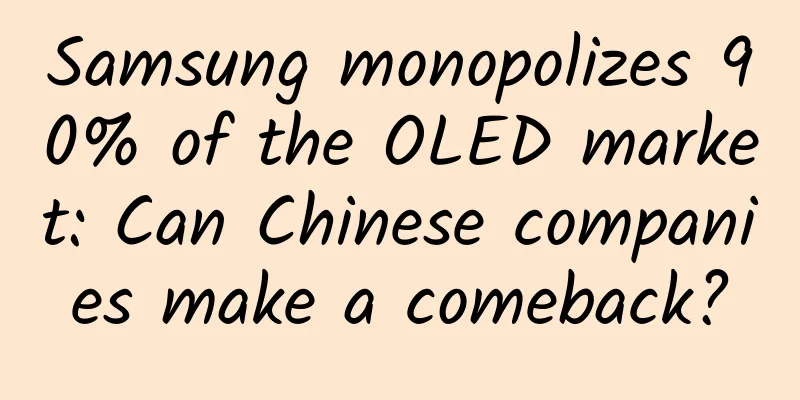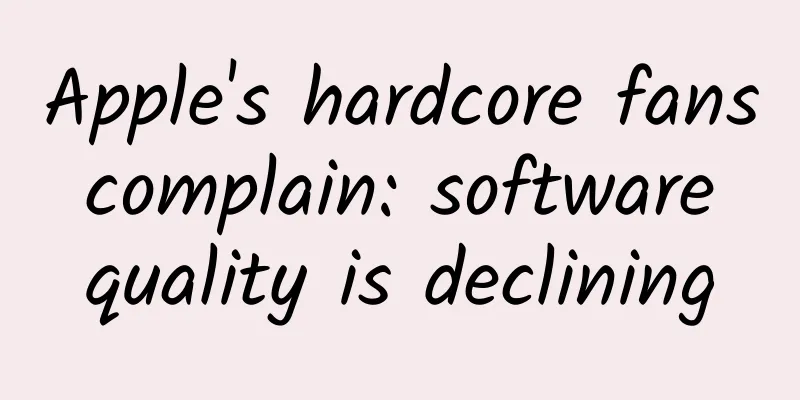Midfield battle of mobile terminals | Ten years of review EP05

|
Today's article is the fifth in the series of Frontier Thinking Forum content. It is organized based on Li Xiang's sharing and is about the review of "smartphones". In the past decade, the mass popularization of smartphones in China has laid the foundation for the entire mobile Internet in China. Chinese mobile phone manufacturers have made smartphones popular in the fierce competition among each other. How did this process happen, and which companies participated in this process? I hope today's article will be helpful to you. In the mobile phone industry, two phenomena have occurred in the past decade:
We will find that in the past ten years, the entire smartphone industry has seen the emergence of three forces: Xiaomi, OPPO (of course, we should also mention vivo, which comes from the same school, and we are used to talking about OV together), and Huawei, each of which is leading the way. They have all encountered their own dividends of the times, seized the advantages given to them by the times, and rushed all the way to the forefront of the industry. After several years of rapid development, the dividends were slowly exhausted and they soon reached their own limits. They had to make strategic adjustments to keep up with the development and changes in the industry. This is what we call the "midfield battle" of smartphones. Why do we want to put this industry under the spotlight today? Because in my opinion, it provides a very rare opportunity to observe an industry from its inception to maturity, and then observe the evolution of the entire industry. We often talk about strategy. What is strategy? Strategy is the matching of goals and means in a specific environment. Only when this matching is achieved can the company's strategy be unstoppable and achieve ideal results. By observing the smartphone industry, we can find that these typical players have all experienced this unstoppable stage in different environments. They have all adapted to the environment and found means to match their goals. We can go back to these companies that are stirring up the global market and see what kind of development logic they use and what means and strategies they use to match their goals when facing environmental changes. Xiaomi’s “Triathlon”The story begins with Xiaomi, founded by Lei Jun. Lei Jun and Xiaomi have enlightened China's smartphone industry. Let me give you two examples: For example, Mr. Luo Yonghao once publicly thanked Lei Jun. He said: "As a person outside the mobile phone industry, Lei Jun rushed into this industry without thinking and achieved great success, which made the manufacturers in the supply chain no longer be completely wary and suspicious of the newcomers." Mr. Luo doesn't usually praise people, so when he does, his words carry a lot of weight. Lei Jun himself once said, "Huawei is the pride of Chinese companies. I think Xiaomi has contributed to Huawei's success today. Five years ago, Huawei started making mobile phones by learning from Xiaomi's product development and user experience." What these two sentences mean is very simple, that is, no matter what Xiaomi’s performance is today, its inspiring and educational role in China’s smartphone industry cannot be ignored. When we judge the value of Xiaomi today, many people only look at its market value and its stock price. However, from a longer time perspective, these current figures cannot give Xiaomi a fair evaluation. Let us first go back to the historical scene ten years ago and see what happened specifically at that time. As we all know, Mr. Lei once said a famous saying: "Go with the flow." Another not-so-nice saying is: "Even pigs can fly when the wind blows." I believe many people are more familiar with the latter sentence, and they are more concerned about the flying "pig". In fact, what is more important is the "wind" that blows up the "pig", which is the "trend" in the previous sentence, or the change in the environment. Lei Jun is one of the first Chinese entrepreneurs to realize the trend and opportunities of mobile Internet. He may also be the most determined entrepreneur to follow the trend. What is this “trend”, or what is the change in the environment? In 2007, Steve Jobs released the first generation of iPhone. The significance of this time point was later magnified by people because it is hard for us to imagine that this moment would later affect the economic development of Finland, the sales of chewing gum in supermarkets, and our BAT pattern. However, Lei Jun saw more than just a cool product. He saw a new business model created by Apple. What model? A high-end mobile phone, a mobile operating system, and an application ecosystem. In this ecosystem, you can make an app to sell, and then give 30% of the revenue to Apple. Chinese entrepreneurs call it the "Apple tax." Apple has created a very important business model in the era of mobile Internet. What does this have to do with Lei Jun? In 2008, Google launched the Android system. Android is open source to all manufacturers. In this way, other manufacturers can also use Android to build their own ecosystem, just like Apple's. Lei Jun saw such a trend, such a great trend - using Android to build an ecosystem. This is not what I said. This is what Lei Jun said himself. Simply put, Lei Jun believed that Apple had created a large market, but other manufacturers did not follow up. So, he decided to do this. There is a complete system behind Lei Jun's actions. Let's first deconstruct Lei Jun's approach and the logic behind it. We will break it down into three aspects: product, business and organization. Let’s start with product. What do you think Lei Jun has learned from Apple's model? Is it the model of collecting revenue and taxes from the App Store that he wants to do the most? We all know that although Apple's tax collection model is very successful, its most profitable source is still hardware and iPhone revenue. So in the beginning, hardware was the absolute core. Why did Apple sell so many iPhones? The reason is simple: the iPhone is easy to use. But what about Android phones? Those who have used Android phones at that time should know that it is not an exaggeration to say that they are difficult to use. Therefore, the first thing Lei Jun had to do was to improve the experience of Android phones. This experience is reflected in three aspects: hardware, software, and the Internet. In terms of hardware, performance can only be improved if the configuration is improved, so Xiaomi needs better hardware; in terms of software system, MIUI is tailored for Chinese users; in terms of Internet services, MIUI is updated once a week, turning the system itself into a service. In addition, users can directly feedback the problems of the phone to Xiaomi engineers through the online forum. This whole set is what Lei Jun calls the "triathlon": hardware, software, and the Internet. It is with this that Xiaomi seized the opportunity when the environment changed and made the mobile phone product itself good. Let's talk about the business aspect. Let's first look at a set of comparisons. In 2012, the Mi2 released by Xiaomi and the HTC flagship phone had almost the same configuration. Xiaomi was slightly better in processor and battery capacity, but the price of Mi2 was 1999 yuan, and what was the price of HTC? 3999 yuan, exactly twice as expensive. This was Xiaomi’s killer feature at the time – price/performance ratio. But why can it reduce the price of high-configuration mobile phones to less than 2,000 yuan? The reason is that Xiaomi has successfully cut two costs. The first cost is the sales channel. As you know, Xiaomi started out as a pure online sales company, doing only e-commerce. Lei Jun has a lot of experience in e-commerce, as Joyo.com was founded by Lei Jun. By selling through e-commerce, the cost of offline retail channels is saved. The second is the brand marketing cost. In those days, everyone in the industry knew that Xiaomi had almost no marketing expenses and used the Internet to make its voice heard. Xiaomi insiders said that at the beginning, their annual marketing budget was only a few million, which was the price of shooting an advertisement for others. It was precisely because of the limited resources that Xiaomi had no choice but to use the Internet and social media to break through the word-of-mouth. For example, take social networks. At that time, Lei Jun himself was very concerned about the operation of Weibo. After the press conference, the first thing he did after stepping down was to pick up his mobile phone and post on Weibo. Finally, let's talk about the organizational level. There are two parts. One is the people in the organization. As we said before, Lei Jun had already thought clearly about everything from products to business. The only thing he needed was someone to help him do it. The things he did were still the same three words: software, hardware, and the Internet. So, for software, he poached people from Kingsoft and Microsoft, for hardware, he poached people from Motorola, and for the Internet, he poached people from Google. At that time, Google was about to withdraw from China and Motorola was retreating globally. Lei Jun seized these opportunities well and found the talents he needed. The fact that Lei Jun was able to find these talents is due to his ability to deceive and poach people. There are rumors in the industry that Lei Jun poached people not by offering sky-high salaries, but by letting them know that this is an opportunity they cannot miss in their lifetime. It is because Lei Jun has thought clearly that he can get a large group of executives from successful listed companies to work with him. This is the talent within the organization, so what about the outside? Lei Jun needs an external network that can support him to join the hardware industry. Here we talk about two important conditions. The first is the supply chain. At that time, the global smartphone supply chain had already taken shape. Many manufacturers used Google's Android system plus Qualcomm chips, Samsung's screens, Sony's cameras, etc. This mature supply chain system lowered the threshold of the smartphone industry. The second is China's manufacturing base. China has a very good mobile phone manufacturing base. Relying on local foundries in China, Xiaomi can quickly expand production. Therefore, whether it is the internal employee structure of the company or the external supply chain system, Xiaomi has a very clear system. Now, after analyzing these three points, let's see how Xiaomi has performed with this strategy. Let's look at the data: In 2014, the shipment volume reached 65 million units, ranking first in the country. Lei Jun became a god in one battle, and Internet thinking became popular. As a result, the era of mobile phones belonging to "China Cool Union" ended. A new era of smart phones began. This stage belongs to Lei Jun's Internet model. An entrepreneur who came from the software and Internet industry used a new set of thinking models to start a new industry and won a great victory. In our view, this is the first stage of smartphones, a stage where innovative models will win. The period from 2010 to 2014 was the "Xiaomi era" in China's smartphone industry. Apple and Google ushered in the era of smartphones. In China, a great opportunity emerged in the mobile phone industry. Xiaomi was the first to seize this opportunity. At this stage, Lei Jun, an experienced entrepreneur, used a complete set of Internet strategies to make smartphones, and in less than five years, he created a company with a market value of tens of billions of US dollars. However, as has been rehearsed countless times in history, once an industry is launched, it will surely move forward, driven by the huge dividend effect, and will not stay where it is. Business heroes will enter one after another, learning from the experience of the forerunners and challenging the position of the leaders. The rise of OVTime passed to 2015. The year before, after Xiaomi became the number one smartphone manufacturer in China, it set a target of 80 to 100 million units for 2015. However, at the end of the year, Xiaomi announced that its sales were 70 million units, far below expectations. You may have seen Lei Jun’s ghost video of “Are you OK?” At the Xiaomi annual meeting in 2015, Lei Jun joked about himself like this: “To be honest, I’m not OK. We have had a very difficult year in the past.” He also said that Xiaomi will have to “make up for the lessons” next. So why is it "not easy"? What lessons do we need to learn? The simple answer is: Xiaomi's model has reached its limit. Xiaomi's approach is only suitable for first- and second-tier cities with a high level of Internet. These areas are relatively mature from social networks to e-commerce markets, and are battlefields where social and e-commerce have already fought. In contrast, the sinking market we are talking about today still had information asymmetry with first- and second-tier cities at the time, and the e-commerce penetration rate was not high. Xiaomi's approach hit a wall, and it fell into growth difficulties. At the same time, other mobile phone manufacturers also learned Xiaomi's strategy. They jointly defined a term called "Internet mobile phone", and the competition between friendly manufacturers was very fierce. As we can see, the environment has changed, and a new wave of opportunities is hidden in the change of environment: Who will provide cheap smartphones to users outside Beijing, Shanghai and Guangzhou who are not accustomed to buying mobile phones online? Whoever can reach these users first will be the winner. The result is that the stars of the smartphone industry this year are two companies that no one expected: OPPO and vivo. These are two low-profile Chinese companies. And their approach seems completely different from Xiaomi's. Xiaomi emphasizes selling mobile phones directly to users through e-commerce sales channels; while OPPO and vivo have huge offline distribution networks. Xiaomi has almost no marketing expenses and relies entirely on social networks and community forums for marketing; while OPPO and vivo like to invite popular stars to shoot exquisite commercials, which will be broadcast on prime time TV. When Xiaomi's era dividends are exhausted, the market becomes the home turf of OV. In places that Xiaomi is not familiar with, there is still a very broad space waiting for new players to "make a difference". Looking back today, the rise of OV marks the evolution of the smartphone industry into the second stage - the channel-driven stage. The founders of OPPO and vivo are both students of Duan Yongping, the founder of BBK. Starting with BBK's learning machines and game consoles, the entire BBK system is best at: making differentiated products, and then using strong channel capabilities and marketing capabilities to sell products to users that are very difficult for other manufacturers to reach. How did they do it? First of all, it is the sales channel. As we all know, China's business actually has layers of parallel markets, each with its own characteristics, such as first- and second-tier cities, third- and fourth-tier cities, rural towns, etc., each has its own market characteristics. Only when players understand the characteristics of this market can they occupy this market. For historical reasons, these two companies with BBK background are very familiar with the sales channels of Chinese digital products. They have set up a large number of offline stores, especially in third- and fourth-tier cities. How many OV stores are there in the country? The official data we can find is that at the peak, each company had at least 250,000 stores. Second, it is marketing methods. OV places great emphasis on traditional media promotion channels, including newspapers and magazines, television (especially variety shows) and offline advertising. These channels are closer to consumers in the sinking market, so the effect is better. Finally, it is about product differentiation. At that time, OV had already begun to promote the advantages of mobile phones in selfie, charging, music and other functions, which were all breakthroughs found in products. For users, the choice is very clear. At the same time, Xiaomi still emphasizes the special craftsmanship of the phone body, which is far from the perception of users. In the past two years when OV rose to prominence, the offline market has received attention from major manufacturers. At that time, Xiaomi and Huawei both began to make up for their shortcomings offline. Xiaomi has its own Mi Home and Mi Experience Stores, with more than 2,000 stores across the country. Huawei is even more aggressive, competing directly with OV. Later, Huawei stores were basically found wherever there were OV stores. At this time, Xiaomi had already lost control of the entire industry. However, on the other hand, while its mobile phone business was being beaten by Huawei and OV, Xiaomi seized the opportunity of IoT and quickly reused the Xiaomi model in other industries, from mobile phone peripherals to department stores. Of course, this is a story for later. In our view, this is the second stage of China's smartphone industry. In this stage, opportunities emerge in the sinking market, and everyone starts to lay out offline channels to take advantage of the information gap, and core players begin to deploy offline. Huawei's "Technology"Entering 2017, new situations emerged. In the past, all smartphone manufacturers, including mobile Internet companies, faced a market with constant gaps waiting to be filled. Users are there, and it depends on whether you have the ability to reach them and convince them to buy or use your products. However, in 2017, China's smartphone shipments experienced an overall decline for the first time. That year, shipments reached only 491 million units, a decrease of more than 12% from 2016. What does this mean? It means that the smartphone market is close to saturation and mobile phone manufacturers have entered the competition in the stock market. There are several reasons for the decline in shipments. On the one hand, with online and offline channels fully occupied, it is difficult for manufacturers to find a high-growth market. On the other hand, mobile phones are getting better and better, and the products are more durable, so the replacement rate has also decreased. At this time, the competition in the smartphone market has completely changed. The battle that Xiaomi and OV are fighting at this moment is actually completely different from that before 2017. Before 2015, Xiaomi discovered a gap in the smartphone market and emerged with a new strategy and model; before 2017, OPPO and vivo taught everyone that the sinking market is very important. Driven by competition and growth, powerful manufacturers including Xiaomi and Huawei have begun to stake out offline markets. But by 2017, the market had entered a stock market, and the key to success became a competition of products and technologies. The players who are still at the table have learned the smart business model and the corresponding playing style; the players who are still at the table have also done it by sinking the channels and marketing. At this time, the role of long-term strategy began to emerge. The baton of the era dividend was passed to another Chinese company, Huawei. Huawei's long-term investment in technology, its strategic approach of concentrating resources and launching saturation attacks, and its determination to conquer the smartphone market have given it a leading advantage at this stage. Let’s first take a look at what Huawei has done in the smartphone market. Today, the Huawei phones that impress people the most are the Mate series and the P series. The reputation of these two product lines was mediocre in the early days, and many people were not optimistic about Huawei. However, everyone overlooked one point, that is, Huawei's learning speed. Today, we see that in the high-end market, Huawei has become the most competitive Chinese brand. Why can Huawei do this? One reason is the result of Huawei's long-term investment in research and development. I once asked Ren Zhengfei, it is rare in the world to have a company that can do both To B products and To C products well. How did Huawei do it? Ren Zhengfei's answer was that Huawei simply used some of the technologies accumulated in the process of making To B products in its own consumer terminal products. From the perspective of the entire company, Huawei invested 101.5 billion yuan in R&D in 2018, with more than 80,000 R&D personnel. In comparison, Xiaomi's R&D investment was 5.8 billion yuan, with a R&D team of 3,700 people, a gap of more than 20 times. Another reason is that Huawei's approach is determined by strategy. In 2011, at Huawei's famous "Sanya Conference", Ren Zhengfei made a strategic adjustment and announced that Huawei officially launched the consumer terminal business. Terminals became one of Huawei's three most important business lines. Huawei began to invest company-level resources in smartphones. What are company-level resources? Ren Zhengfei often says that we should use "Van Fleet ammunition". "Van Fleet ammunition" is a military term, which means: investing a large amount of ammunition regardless of cost to suppress the opponent and complete a devastating blow before the opponent organizes defense. So Ren Zhengfei means that Huawei should concentrate all its artillery fire to attack a wall and adopt a "saturation attack" strategy. When Huawei applied this strategy to the smartphone industry, the entire industry witnessed the power of this established company. In 2014, Huawei's mobile phone shipments in the global market were only 73 million units. By 2018, it reached 206 million units. Some institutions predict that this year, Huawei will surpass Apple and become the second largest global shipment. Huawei's success is the third stage of China's smartphone industry - the stage of winning by technology and products. In this stage, the market has entered the stock market, and the industry has begun to become a zero-sum game. In terms of playing style, everyone began to compete hard on technology and products, and core players began to increase their R&D investment. The boundaries of strategyThese are the three stages of the evolution of the smartphone industry in China. What can we learn from them? First, these three stages are driven by three different engines, including Xiaomi's model-driven, OV's channel-driven, and Huawei's technology-driven. Of course, the evolution of this industry is not over yet, but what I want to say is that these three stages will appear not only in this industry, but in many industries. You can think about it yourself. What stage is your industry in now? Is it the light cavalry stage of model-based success, the channel sinking stage, or has it reached the stage of hard Qigong competition? The second inspiration is the importance of strategic applicability and strategic boundaries. You will find that no company’s strategy or approach can always be correct and all-powerful; it always needs constant adjustment, because strategy and approach always have their own boundaries. Xiaomi's Internet model reached its limit when the first- and second-tier markets were temporarily saturated, and Xiaomi had to open offline stores; OPPO and vivo's offline land grabbing reached its limit when the industry entered the stock market; Huawei's heavy investment and large-scale army pressure has forced it to squeeze into the Chinese market under today's international situation, and for it, this is also a limit. Therefore, no strategy is a panacea; they are all limited to a certain time and space. Throughout the evolution of the industry, the players who can still sit at the poker table today actually understand one thing: don’t be too proud to disdain learning, and don’t be too humble to lose yourself. Whether it’s Xiaomi, OV or Huawei, they are actually learning from each other, while also constantly exploring their own advantages. The current period is the stage where Xiaomi and OV are learning from Huawei, stockpiling troops and food, and comparing technology and products. While all manufacturers are working on tackling tough technologies and increasing their R&D investments, what changes have taken place in mobile phone products themselves? I don’t know if you often watch mobile phone launch conferences. If you do, you may find that press conferences seem to be getting more and more boring. In previous mobile phone conferences, manufacturers talked about voice assistants and new exciting features. Even the addition of portrait mode to the camera was eye-catching. But recently, the technology that manufacturers pursued has become the number of pixels of the camera and the number of hertz of slow motion. This technological exploration is actually reaching a dead end. Therefore, the exploration of the third phase may be entering a period of "technical confusion". During this period, Huawei's strategy of concentrating its efforts on technology will also encounter challenges. So, what changes will happen to the mobile phone industry at this stage? In other words, after three rounds of competition in model, channel and technology, what will be the winning point of smartphones in the next stage? What will be the corresponding strategy? From the current perspective, we believe that one possible change that may occur during the period of technological confusion is that competition will begin to shift from competing for new users to retaining old users. We can take Apple as an example to see how it does it. On the one hand, Apple builds a hardware ecosystem to achieve synergy between mobile phones, computers, tablets, watches and headphones. On the other hand, Apple provides better services and content around its hardware ecosystem, such as the music, movie and news reading services that Apple is focusing on. We can take a look at Apple’s revenue structure table (see the figure below). In the past two years, everyone has always said that iPhone sales are not good and Apple’s mobile phone revenue has declined, but from this table we can see that Apple’s revenue is becoming diversified. In addition to the iPhone, the proportion of revenue from services and wearable devices is increasing. This is just a possibility. We cannot rule out the possibility that a new way of playing will emerge in the future. These may affect the next evolution of the industry. What is certain is that in the next ten years, we will definitely see something different. Of course, no matter what kind of innovation will appear in this industry next, we must not forget what we just said: Don’t be so proud as to disdain plagiarism, and don’t be so humble as to lose yourself.
|
Recommend
Humanity's Asteroid-Earth Rescue Plan
Under the coastline of Mexico's Yucatan Penin...
The eruption of a volcano thousands of miles away actually gave the northern hemisphere a chill in the summer
The unexpected appearance of the "fish chase...
Washing dishes this way increases bacteria by 70 times! All of them are eaten by the stomach...
In daily life Many people have this habit at home...
The French plane tree is not a sycamore and is not native to France.
I heard that the "French plane trees" i...
Don't pick the stems when washing strawberries!
Too long to read When washing strawberries, do no...
Product Operation: How to create a product from 0 to 1 and turn it into RMB?
The process of a product going from 0 to 1 and fi...
Is Huaihua under lockdown in 2022? Can I still enter Huaihua now? Attached with the latest notice
Recently, new local outbreaks have occurred in ma...
How to use growth hacking techniques to attract new customers and boost activation?
I believe that every operations student is famili...
Saving the Northern White Rhino: In vitro fertilization brings hope! | Nature Trumpet
Welcome to the 52nd issue of the Nature Trumpet c...
How to come up with a good title, here are 5 key points to refer to
The first set of data : As of April 2017, the num...
Why must the freezing temperature of a refrigerator be set at minus 18 degrees?
Summer is here, and the weather is getting hotter...
NBA basketball teaching_professional basketball teaching_NBA basketball teaching video_nba shooting teaching video
NBA basketball teaching_professional basketball t...
3-point optimization of the information flow landing page instantly increased conversion by 136%!
Conversion is the core of the entire promotion pr...
Tesla crashed into guardrail after failing to brake, after-sales test reproduced the accident, official test showed the brakes were qualified
Over the past year, news about Tesla's "...
Application of face stylization technology on mobile terminals
Preface With the explosion of concepts such as th...









